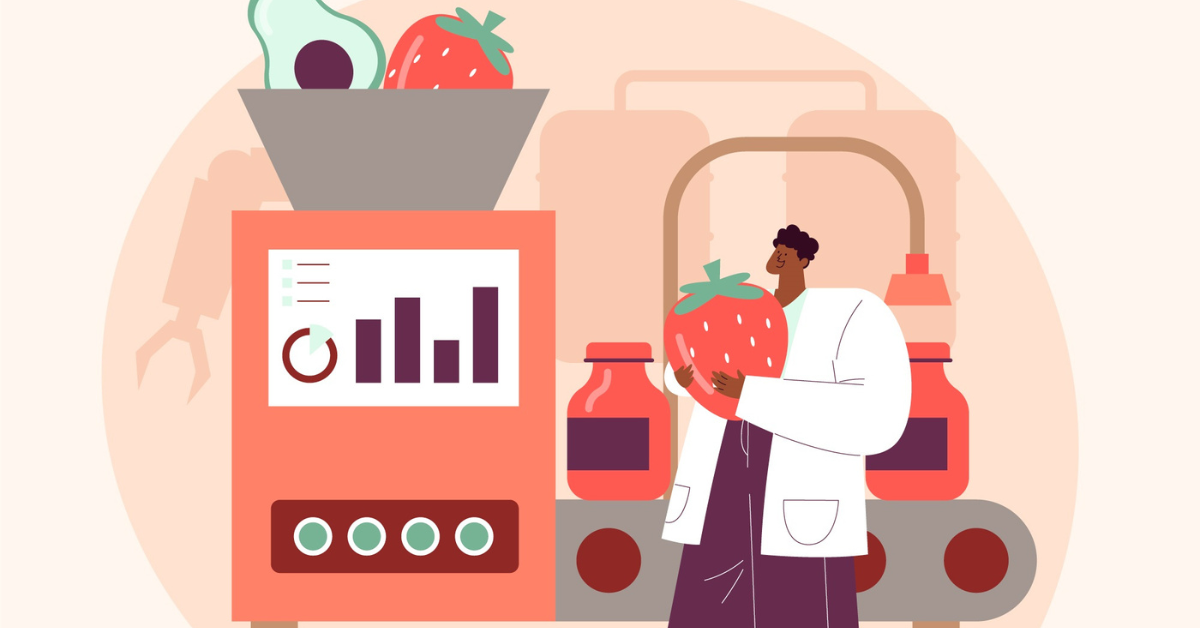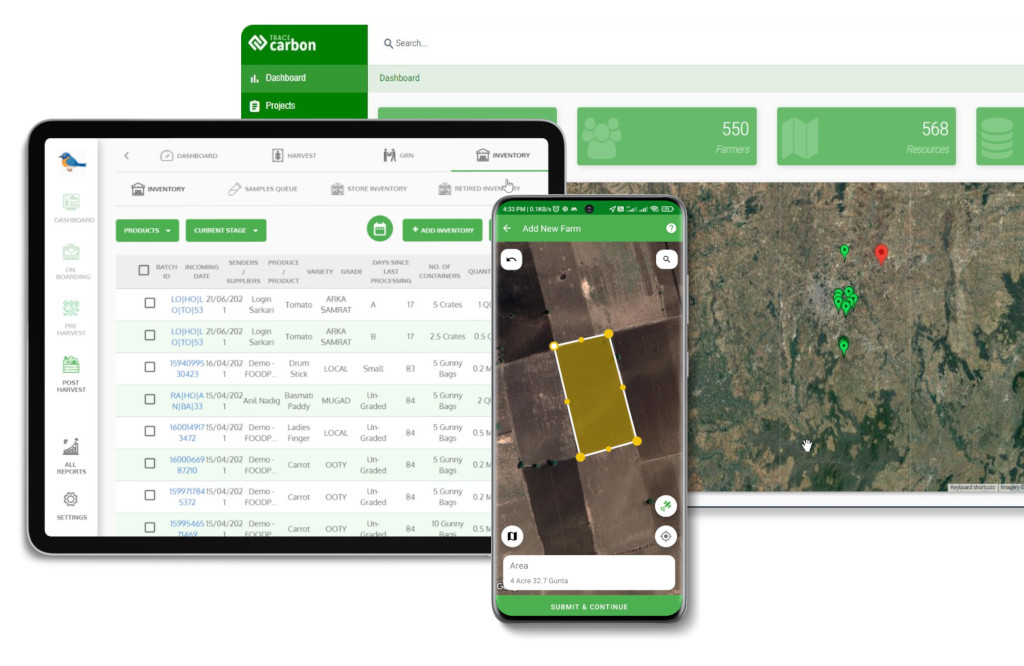Contact: +91 99725 24322 |
Menu
Menu
Quick summary: Learn how digital process configuration empowers food producers to scale, automate recipes, and ensure compliance. From bakeries to beverages—future-proof your operations today!

Whether you’re running a large-scale bakery or a beverage production line, even the smallest manual error in your process can lead to batch failures, wasted ingredients, and costly recalls. That’s where digital process configuration in food production becomes a game-changer. By automating recipe execution, ingredient sequencing, and production flows, food manufacturers can eliminate guesswork and human error—ensuring every batch meets quality, safety, and compliance standards.
The question is: Can your current production process keep up with growing SKUs, customization demands, and tightening regulations? In this blog, we explore how digital process configurators are transforming food production—from artisanal bakeries to large beverage plants—and why it’s time to rethink your approach to scaling and consistency.
Key Takeaways
Food production today is no longer about making one standard product over and over again. Customers demand variety, customization, and seasonal specials, and that’s forcing food manufacturers to juggle dozens of recipes, ingredients, and process variations daily.
But with that complexity comes some serious pain points that traditional systems—or manual workarounds—just can’t handle anymore:
Ever tried scaling an artisanal recipe meant for 10 loaves of bread to produce 1,000?
It sounds simple—multiply the quantities—but in reality, the taste, texture, and quality often change. Without process automation, scaling introduces inconsistencies that customers notice—and that can hurt your brand.
In high-pressure production environments, even experienced operators make mistakes.
One wrong decimal point. One missed step.
Suddenly, you’ve wasted an entire batch of premium ingredients—or worse, triggered a costly recall because an allergen label was wrong.
Manual recipe handling isn’t just inefficient—it’s risky.
Today’s conscious consumers want to know: What’s in my food? Where did it come from?
Meanwhile, regulators demand proof of compliance at every step—from ingredients to finished goods.
If your production process is manual or fragmented, tracking every batch in real time becomes nearly impossible—especially when audits hit.
From gluten-free pastries to sugar-free beverages, product lines are expanding fast.
Custom orders, seasonal flavors, and regional variations pile pressure on production teams to adapt quickly—without sacrificing quality or speed.
And let’s face it—manually managing dozens of SKUs is a nightmare.
Examples
Food businesses that rely on manual processes or outdated systems are leaving themselves wide open to risk, waste, and missed opportunities.
A digital process configurator is like having a super-smart production assistant built right into your system. It knows your recipes, understands your equipment, and helps you run your food production like clockwork, every single day.
Imagine you’re managing dozens of recipes—bread, cakes, sauces, beverages—each with their own ingredients, mixing times, temperatures, and compliance rules. Keeping track manually? Risky. That’s where the configurator steps in.
Instead of relying on spreadsheets or operator memory, the configurator automatically:
Result? Every batch turns out exactly how it should—consistent, compliant, and customer-ready.
One of the biggest reasons for production errors is ingredient sequencing mistakes or manual machine settings being wrong.
The digital process configurator makes sure:
The magic doesn’t stop at the production line. A good configurator talks to your ERP or MES systems.
You get one connected system—from raw material intake to final product—all automated, monitored, and optimized.
Manual production processes are the biggest hidden bottleneck in food manufacturing today.
They drain time, increase waste, and leave your brand exposed to costly mistakes.

If you’ve ever run a bakery, you know this all too well—no two batches of dough behave the same, especially when you’re scaling up.
The sourdough that’s perfect at a 10kg batch suddenly loses its magic when you try making 100kg.
The challenge? Scaling artisanal recipes without compromising on quality, texture, or taste.
That’s where digital process configurators change the game for bakeries.
In a modern bakery, you’re not just making one product anymore.
Today it’s sourdough loaves, tomorrow it’s custom cakes for the holidays, next week it’s gluten-free muffins.
Each product has:
Manual adjustments?
They increase the risk of:
Auto-Adjusts for Batch Size:
Whether you’re making 50 loaves or 500, the system recalculates every ingredient down to the gram.
No more scaling errors. No more wasted flour or sugar.
With SKUs changing daily, keeping track of allergens—nuts, dairy, gluten—gets risky fast.
For bakeries, consistency isn’t optional—it’s what keeps customers coming back.
That’s exactly what a digital process configurator delivers—the ability to scale up your recipes without scaling up your risks.
Absolutely! Here’s the elaborated Beverage Use Case in a conversational, relatable tone with a strong strategic POV targeting beverage manufacturers, production heads, and compliance teams:
In the beverage industry, one-size-fits-all no longer exists.
From classic orange juice to seasonal fruit blends and sugar-free sodas, beverage plants today manage a dizzying variety of recipes, flavors, and custom orders—all while staying compliant with stringent food safety regulations.
The challenge?
Balancing recipe creativity with operational control. Because when you’re working with complex blends and real-time orders, one small error in formulation, ingredient sourcing, or labeling can ruin entire batches—or worse, result in regulatory fines.
Your production schedule looks like this:
Each SKU needs a different mix of ingredients, process settings, and quality checks—manual handling here is just asking for costly mistakes.
The configurator allows your team to adjust recipes on the fly without fear of missing an ingredient or miscalculating ratios.
Whether it’s changing the vitamin mix in a fortified drink or swapping sweeteners for a sugar-free variant, the system automatically recalculates:
With regulations tightening worldwide, traceability isn’t optional—especially when working with fruit concentrates, sweeteners, or functional additives.
The configurator:
In the beverage world, your product is only as good as your last batch.
Mistakes aren’t just costly—they’re public, especially in retail and export markets.

Here’s your must-have checklist when evaluating options:
Food production isn’t static—one day it’s a small trial batch, the next it’s a full-scale commercial run.
Your configurator should:
Why it matters: It eliminates human error and ensures that your small-batch artisanal quality stays intact—no matter the volume.
Your configurator can’t operate in a silo. It must talk to your ERP, MES, inventory, and quality systems in real time.
Look for:
Why it matters: It keeps procurement, finance, and production perfectly aligned—no more data silos or manual double-entry nightmares.
With rising allergen sensitivity and stricter labeling laws, this is non-negotiable.
Why it matters: One missed allergen label could lead to costly recalls or legal action. This protects your brand and your consumers.

In complex agri-food supply chains, precision, traceability, and cost control are everything. TraceX’s Food traceability platform provides Process Configuration Solution is designed to give production managers and compliance teams full control over every step of the processing workflow, from raw material handling to final product dispatch—all while keeping sustainability and compliance front and center.
TraceX Process Configuration turns your production line into a smart, compliant, and cost-optimized operation.
Perfect for industries like:
From baking the perfect sourdough to balancing complex beverage blends, digital process configuration is transforming how food businesses operate. It takes the guesswork out of production, reduces waste, improves traceability, and ensures every batch meets your quality, cost, and compliance standards.
In today’s competitive market, staying manual is risky. The future belongs to food brands that leverage smart, digital tools to scale, innovate, and protect their brand.
It automates recipes, adjusts batch sizes, tracks allergens, and ensures real-time quality control—making food production more consistent, efficient, and compliant.
No. Small and mid-sized food businesses benefit too—whether scaling batches, handling seasonal recipes, or ensuring traceability for compliance and audits.
Yes. By minimizing ingredient waste, preventing batch errors, and optimizing processes, digital configurators help food businesses control costs and improve profitability.
